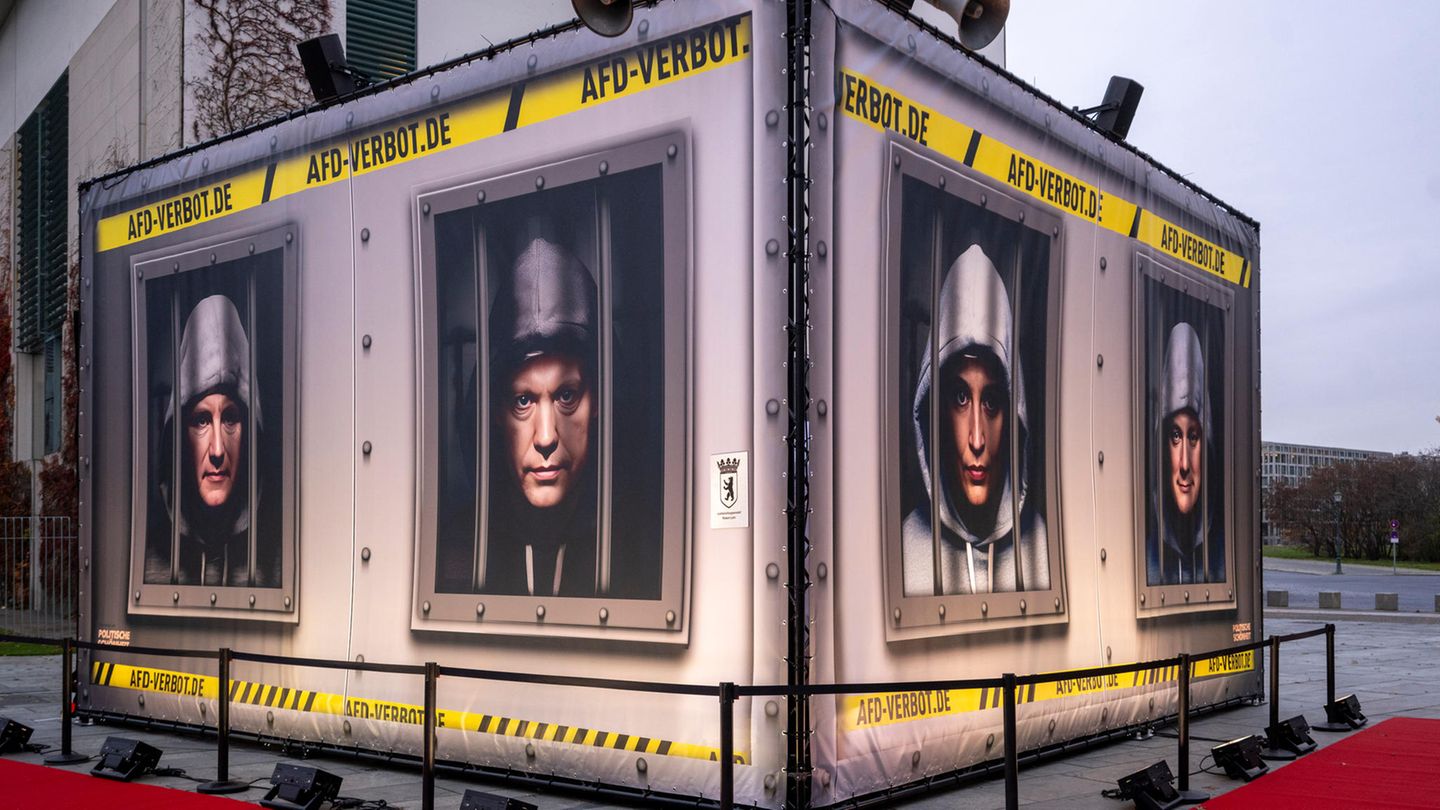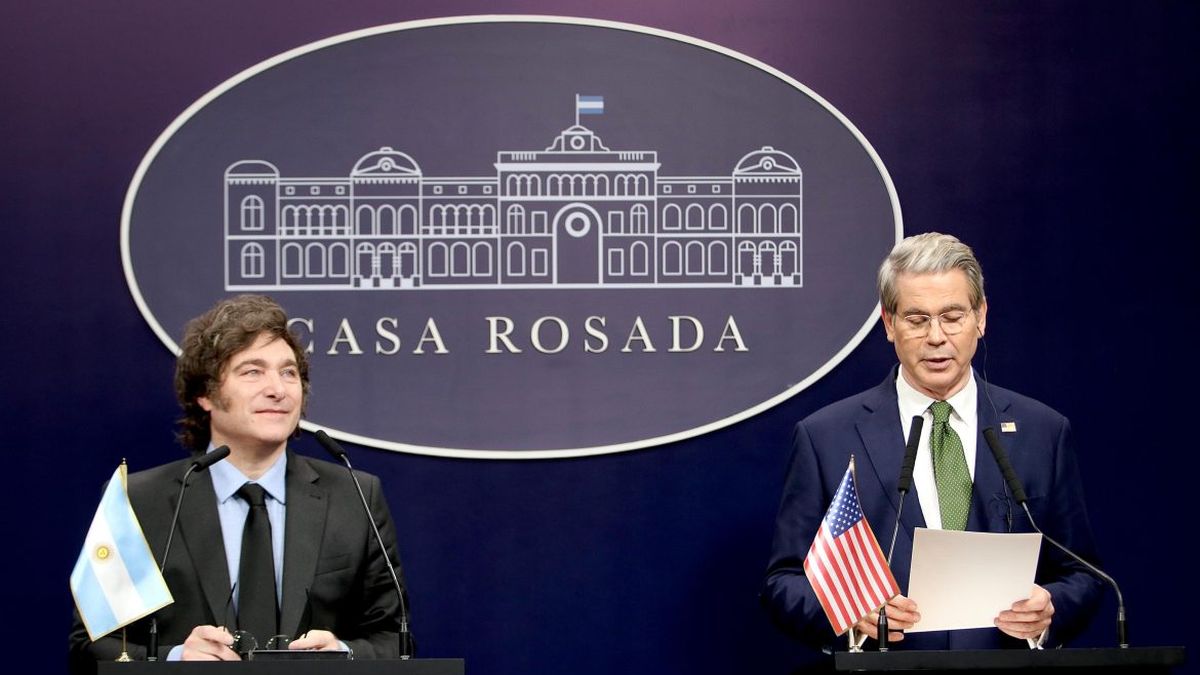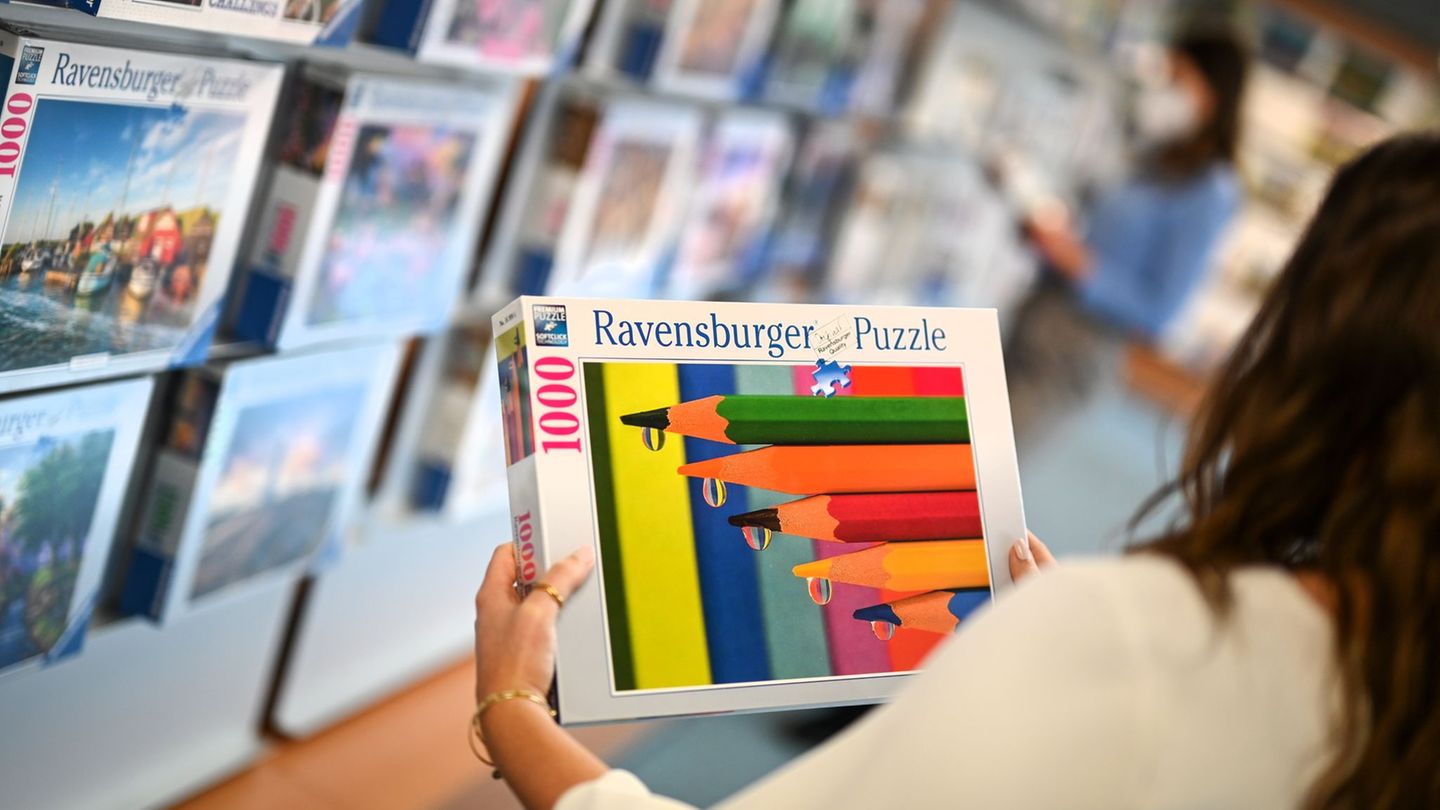With an action in front of the Federal Chancellery, the “Center for Political Beauty” launched an initiative for a ban on the AfD. A website with a fake video of the Chancellor was also put online. The government reacted angrily.
The satire and political initiative “Center for Political Beauty” has launched an action calling for a ban on the AfD in front of the Chancellery in Berlin. The group presented photo montages there on Monday morning in which the Thuringian AfD leader Björn Höcke can be seen behind bars. In addition, numerous quotes were played over loudspeakers during the campaign. They were presented as evidence to justify a ban on the AfD.
At the same time, the initiative put the website online, which ostensibly gives the impression that Chancellor Olaf Scholz (SPD) would also supposedly support a ban on the AfD. For this purpose, a video was created using artificial intelligence in which Scholz supposedly gave a speech. The video is deceptively real, but is clearly recognizable as a fake.
The rest of the website looks like an official government website. “Over 1,500 facts relating to around 350 people are recorded on the portal, which underline the threat, urgency and seriousness of the project,” the group explained. This marks a “decisive step in the fight against right-wing extremism in Germany and to preserve democracy.”
Goal AfD ban, means fake video: Federal government is annoyed
The federal government reacted angrily to the forgery: “We don’t take this lightly at all,” said government spokesman Steffen Hebestreit on Monday in Berlin. Such counterfeits “cause uncertainty and are manipulative.” It is still unclear whether the action has legal consequences – “We have to look at that first,” said Hebestreit.
Hebestreit admitted that the video was deceptively real. “I think, above all, the language is very close to the original,” said the Scholz spokesman. “That can be funny” – but the federal government still wants to “warn against such steps,” added Hebestreit. Such fake recordings make it “increasingly difficult to distinguish between real and fake.” Such forgeries are used “to influence public opinion.”
Hebestreit admitted that dealing with the phenomenon was not easy for the federal government. “We don’t have the opportunity to set up a Ministry of Truth and then the government says: That’s true and that’s not true.” A working group at the Federal Chancellery with several ministries is currently working on strategies to combat increasing disinformation. Results could be presented in the summer.
Pictures of the day
Baby alarm
In the gallery: The pictures of the day tell small and large stories from around the world.
Source: Stern
I have been working in the news industry for over 6 years, first as a reporter and now as an editor. I have covered politics extensively, and my work has appeared in major newspapers and online news outlets around the world. In addition to my writing, I also contribute regularly to 24 Hours World.




